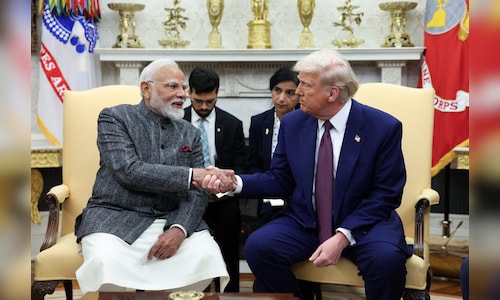Lutnick pointed out that for a mutually beneficial agreement, both nations would need to work together with understanding and cooperation. He said, “India’s agricultural market cannot remain closed forever. It must open up. The good thing is that the Indian government truly understands its own market, and similarly, we understand ours.”
US-India Trade Talks: The Need for Reciprocal Tariffs and Market Access
When asked about the political sensitivities regarding India lowering import duties on agricultural products, Lutnick responded that the solution lies in crafting a thoughtful agreement. “Yes, the Indian market for agriculture needs to open up. But how it’s done, and at what scale, can be managed intelligently. You could introduce quotas or limits to achieve this,” he said. The US Commerce Secretary proposed that India could adopt flexible strategies, including setting quotas on specific agricultural products or imposing limits to ease the process of market liberalisation.
Addressing concerns about the impact of tariffs on inflation, Lutnick refuted claims that tariffs lead to inflation, citing India’s own high tariff rates without resulting inflation.
He explained, “India has among the highest tariffs in the world, and yet, there is no inflation. Inflation results from running deficits and printing money, not from tariffs.” He argued that India’s high tariffs should be re-evaluated to facilitate smoother trade relations between the two countries.
What’s Next for India-US Trade Relations: The Bilateral Trade Agreement by 2025
Looking ahead, Lutnick expressed confidence that a broad-based trade agreement between India and the US could be achieved by 2025. He emphasised the need for a macro-level deal that encompasses the entire trade relationship, rather than focusing on individual products. “We need to think big and aim for something that connects India and the United States at a broader scale,” he said, adding that Prime Minister Modi’s strong relationship with President Trump could play a pivotal role in moving the discussions forward.
The proposed bilateral trade agreement aims to strengthen trade ties and create a more balanced, fair trade framework. Lutnick stressed that the US would like India to lower its tariff policy, a stance that aligns with the Trump administration’s focus on tariff reciprocity, where the US matches tariffs imposed by other countries. He said, “How you treat us is how we would like to treat you.”
Doubling bilateral trade to $500 billion by 2030
The US is also keen on expanding trade to support job creation, national security, and economic growth. During a recent meeting between President Trump and Prime Minister Modi, both leaders expressed their commitment to expanding trade and set a bold target of doubling bilateral trade to $500 billion by 2030, as part of the “Mission 500” initiative.
India’s Commerce Minister Piyush Goyal was in the US this week to advance the discussions, paving the way for the negotiation of the first tranche of a multi-sector Bilateral Trade Agreement (BTA) by the fall of 2025. The two countries are focused on finalising senior representatives to drive forward the negotiations, aiming for a mutually beneficial deal that can enhance the US-India economic relationship.

